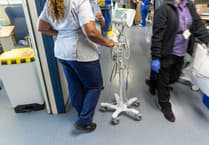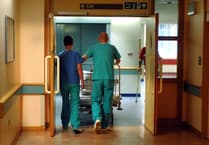THERE are more nurses and midwives working in the NHS than ever before according to new figures published on January 25.
NHS England data for October shows the number of nurses working in the NHS in England is now at almost 372,411 – the highest recorded number ever, meaning there were over 20,000 more in the NHS workforce going into this winter compared with last year.
The number of midwives has grown by more than 1,000 from last year to 23,396 – the largest number of midwives ever.
The unprecedented growth in the NHS workforce came as the health service opened new routes into the two professions and expanded international recruitment and retention initiatives.
Targeted initiatives to support the midwifery workforce to grow included NHS England funding retention programmes in every maternity unit in England and additional in-year investment of up to £4 million to accelerate the number of Professional Midwifery and Nurse Advocates.
This increase in the NHS workforce is also reflected in a rise in the number of healthcare support workers, with 8,000 more people working in such roles as of September 2023 compared to same month the year before. The rise followed a dedicated programme of work to grow the healthcare support worker workforce through a national recruitment drive.
The rise followed the publication of the NHS Long Term Workforce Plan which will see medical and adult nursing training places almost double by 2031. While additional recruitment, new retention measures and reform for how the NHS works could mean the NHS has at least an extra 60,000 doctors, 170,000 more nurses and 71,000 more allied health professionals in place by 2036/37.
Dame Ruth May, Chief Nursing Officer for England, said: “Nurses, midwives, nursing associates and support workers are a crucial part of our NHS workforce, providing essential treatment and care to patients and communities.
“It's good to see today’s figures which show growth in these roles across the NHS. Of course, we still have some way to go which is why it is vital we continue to build our workforce as set out in the NHS Long Term Workforce Plan - through increasing the number of future nurses and midwives in training and improving retention. Key to this is improving the experiences of our colleagues who work so hard to provide patients and the public with the very best care.
“Joining the NHS was the best decision I ever made. If you think nursing or midwifery could be for you, you can search ‘NHS nursing careers’ to find out more about the roles available and how to apply.”
Health Minister Andrew Stephenson said: “It’s fantastic that there are over 370,000 nurses and midwives looking after patients in the NHS – 21,000 more than last year – and a record 139,000 doctors.
“Our brilliant NHS staff are central to our plan to make healthcare faster, simpler and fairer for patients, and through the NHS’s Long Term Workforce Plan we will continue to build on this progress and double the number of adult nurse training and medical school places by 2031.”
Kate Brintworth, Chief Midwifery Officer for England, said: “With 1,000 more midwives in our workforce than a year ago, the results of this data show green shoots of progress and are a welcome boost for our maternity and neonatal services.
“While this is good news, it is important for us to continue to build on this progress, in line with ambitions in both the NHS Long Term Workforce Plan and our Three year delivery plan for maternity and neonatal services.”
Professor Mark Radford – Director of Education and Training, NHS England said: “We are so pleased to see the growth within the nursing, midwifery and support staff workforce and will build on this as we work to achieve the Long Term Workforce Plan commitment to train and retain more nurses and midwives.
“Showing people what a nursing or midwifery career has to offer will be vital to the success of the NHS Long Term Workforce Plan and the NHS is growing a number of entry routes, such as the nurse degree apprenticeship, to make sure a career in nursing is a possibility for as many people as possible.”




